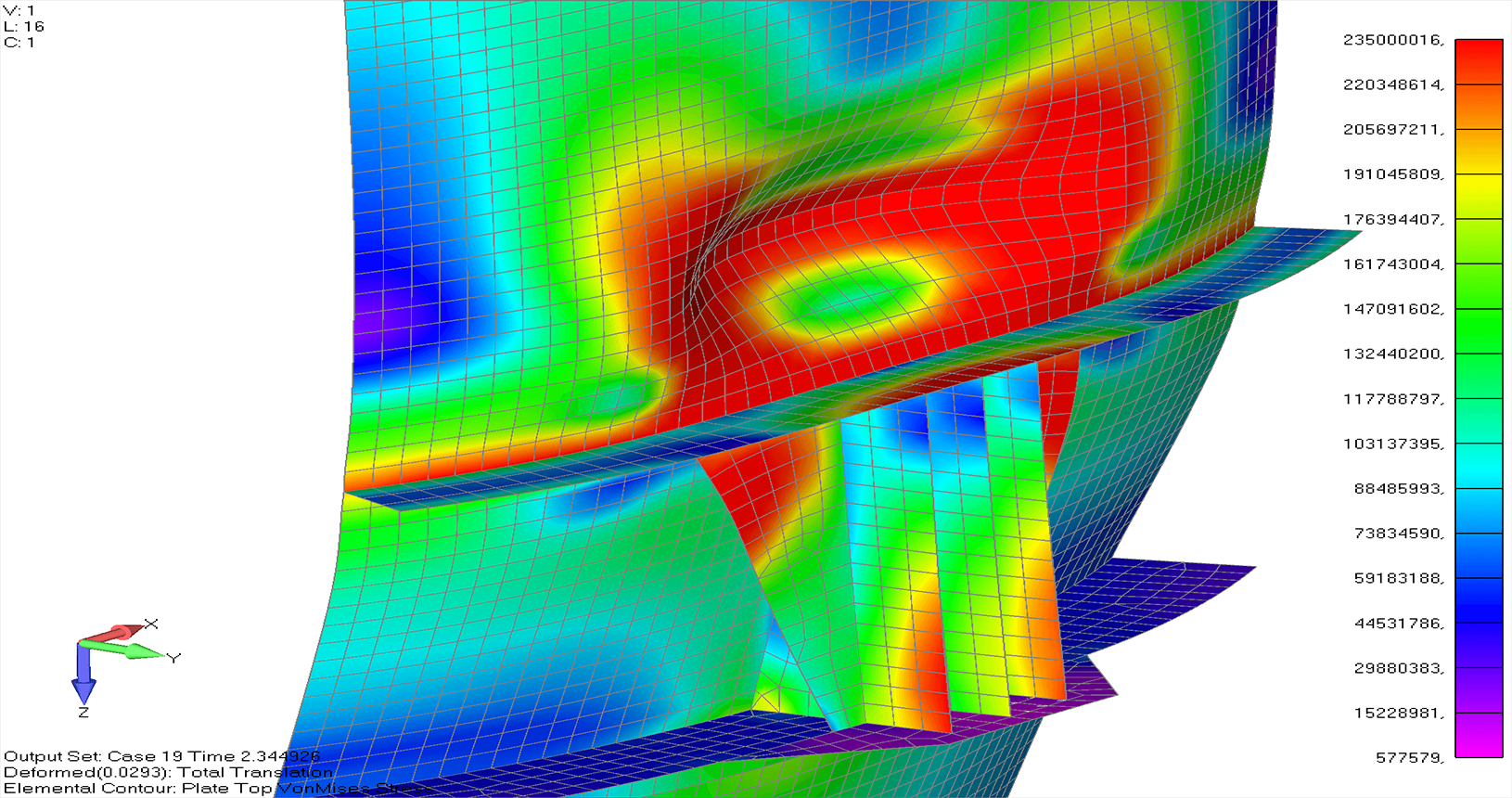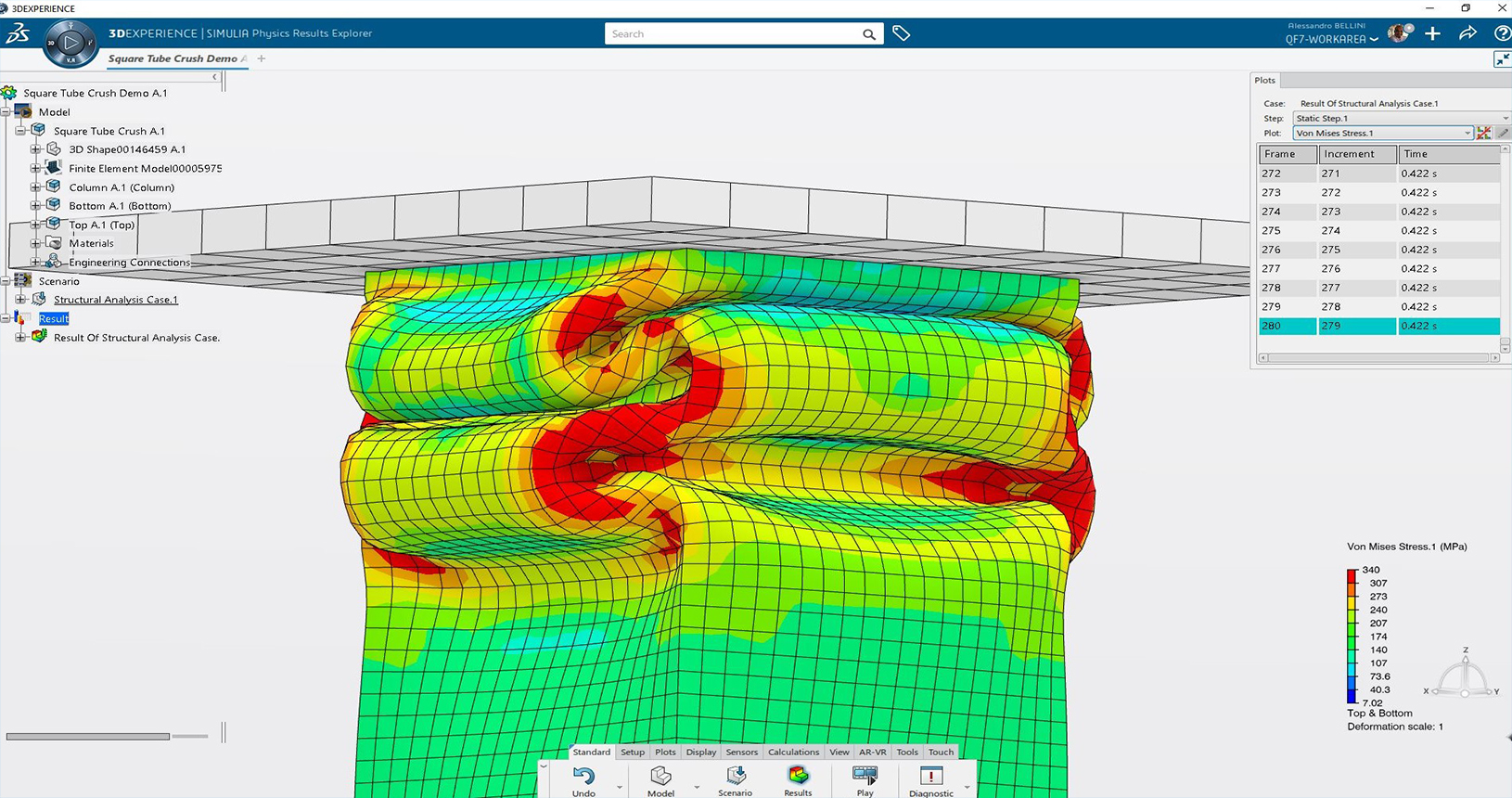Computer Aided Engineering
CFD
Computational fluid dynamics or CFD analysis is one of the key analysis methods used in engineering applications. The origins of CFD lies in the mankind’s efforts to better understand the power of natural elements like wind, storms, floods, or sea waves. With a CFD analysis, we can understand the flow and heat transfer throughout a design process. The basic methodology for any engineering CFD analysis is based on a few procedures:
• Understanding flow model — Flow separations, transient effect, physical interactions;
• Proving assumed model — Experimental results validation, parametric studies, structural simulations;
• Model optimizing — Reducing pressure drops, flow homogenization, improving laminar and turbulent mixing.
FEM
The finite element method (FEM) is a numerical technique used to perform finite element analysis (FEA) of any given physical phenomenon. It is necessary to use mathematics to comprehensively understand and quantify any physical phenomena, such as structural or fluid behaviour, thermal transport, wave propagation, and the growth of biological cells. Most of these processes are described using partial differential equations (PDEs). However, for a computer to solve these PDEs, numerical techniques have been developed over the last few decades and one of the most prominent today is the finite element method. The finite element method started with significant promise in the modelling of several mechanical applications related to aerospace and mechanical engineering. The applications of the finite element method are only now starting to reach their potential. One of the most exciting prospects is its application in coupled problems such as fluid-structure interaction, thermomechanical, thermochemical, thermo-chemo-mechanical problems, biomechanics, biomedical engineering, piezoelectric, ferroelectric, and electromagnetics.
CAD
Computer-aided design or CAD refers to the use of computer software that supports the design process. The software helps us create, modify, analyse, and enhance a design. In other words, CAD is software that helps us design things. Many people believe that computer-aided design refers just to drawings. In fact, it does not. CAD refers to any use of software to help in the design process. CAD software replaces drafting by hand with an automated process.
Computer-aided design benefits;
• Better Visualization: of the finished product, sub-assemblies, and component parts of a CAD system significantly speeds up the design process.
• Better Accuracy: people who use CAD software work more accurately. In other words, they make fewer mistakes.
• Easier: CAD programs offer more robust and easier design documentation, including geometrics and dimensions, bills of materials, etc.
• Re-Use: the software offers easy re-use of best practices and design data.
EPrS
EPrS (Engineering Process Simulation) is the process of using computer-based modelling of a system to understand its behaviour and predict the effect of changes. Simulation represents a powerful method for analysing, designing, and operating complex systems. It provides a proven, cost-effective way to explore new processes and designs, without having to resort to expensive pilot programs or prototypes. The level of understanding that can be developed through simulation is seldom achievable by any other means. Process modelers are primarily interested in representing the behaviour of a real-world physical process in a replicable, mathematical form. They may imitate the process of interest by configuring pre-built objects and blocks, as is the case when building a model in a sequential modular flow sheeting environment. They can also provide their own understanding of the through an equation-oriented package.



